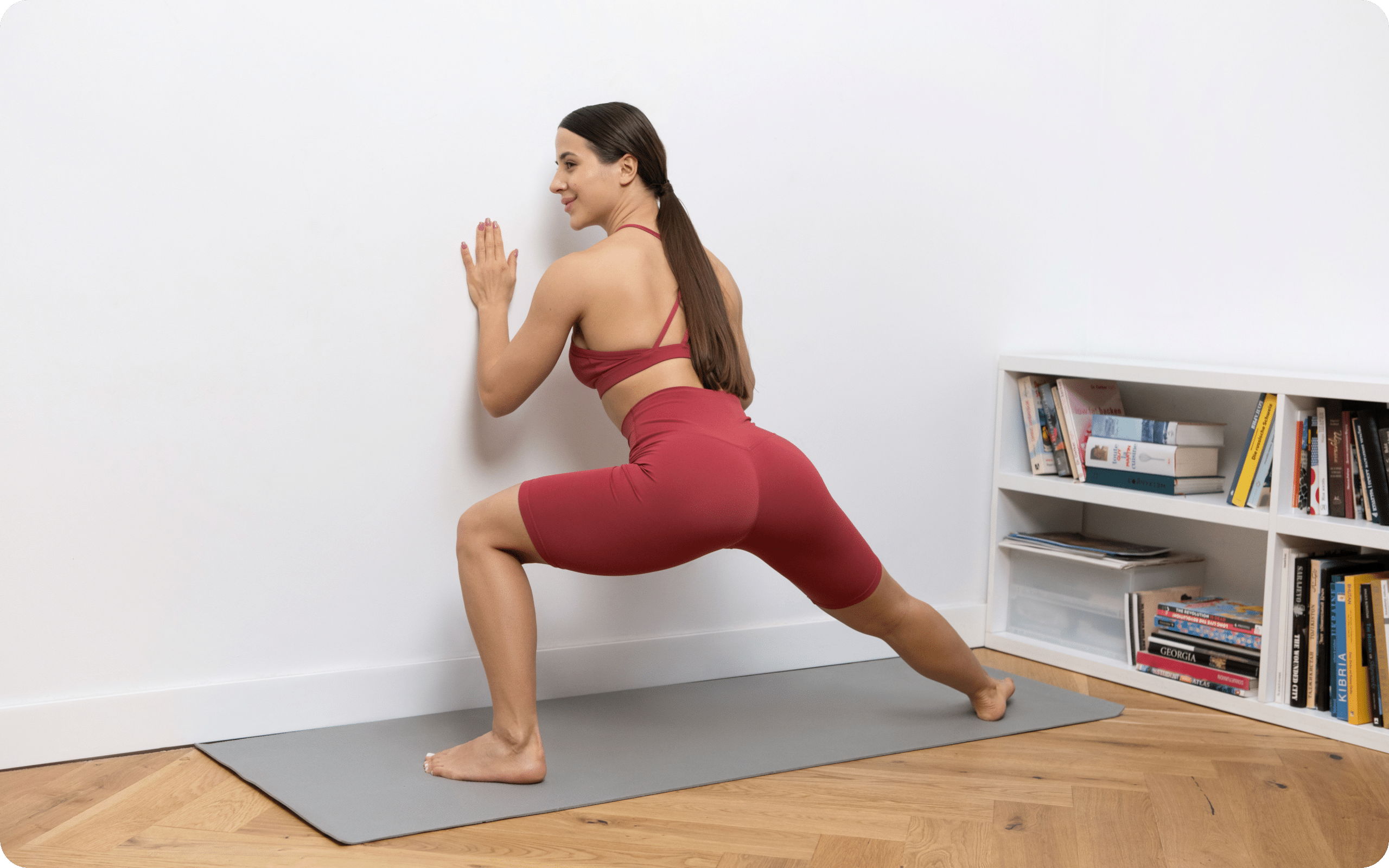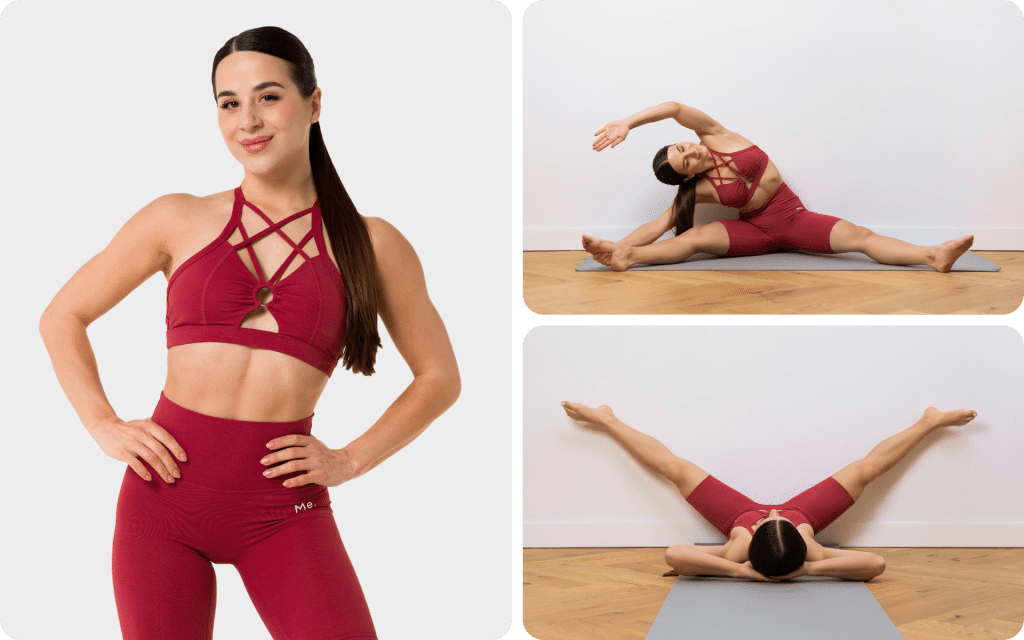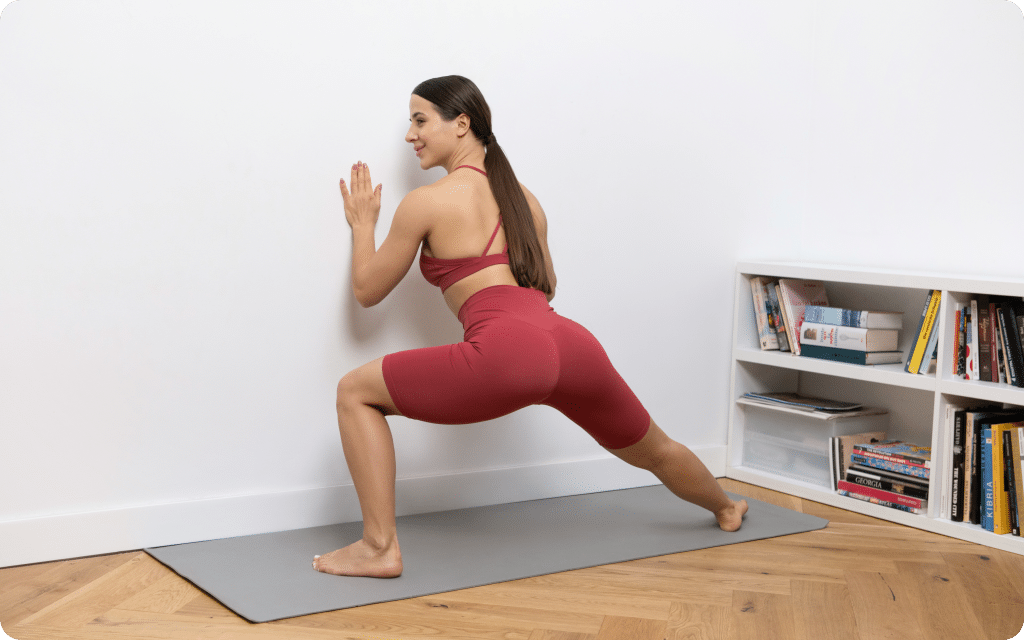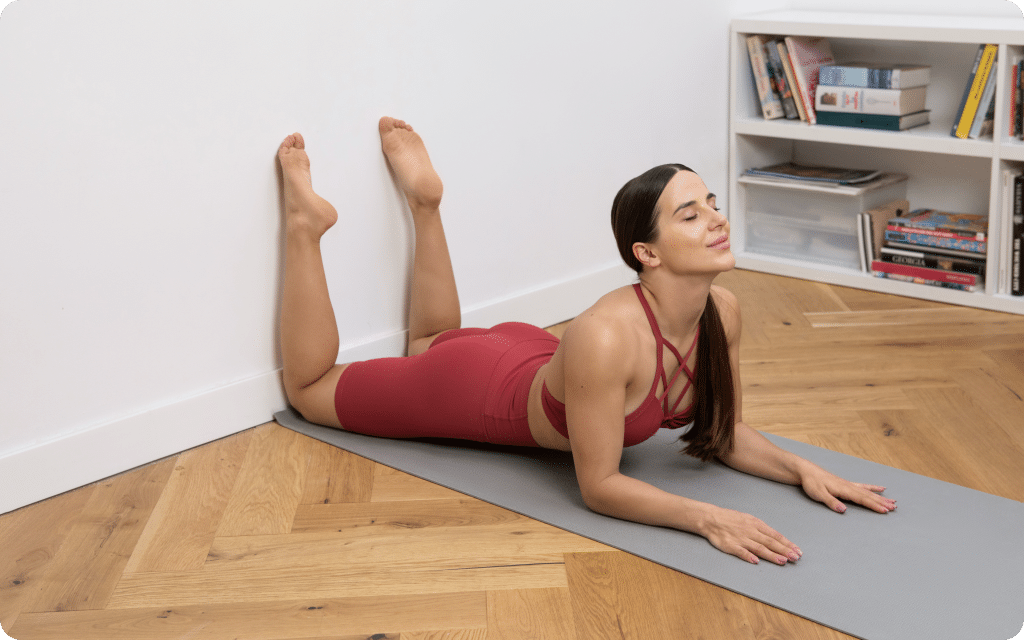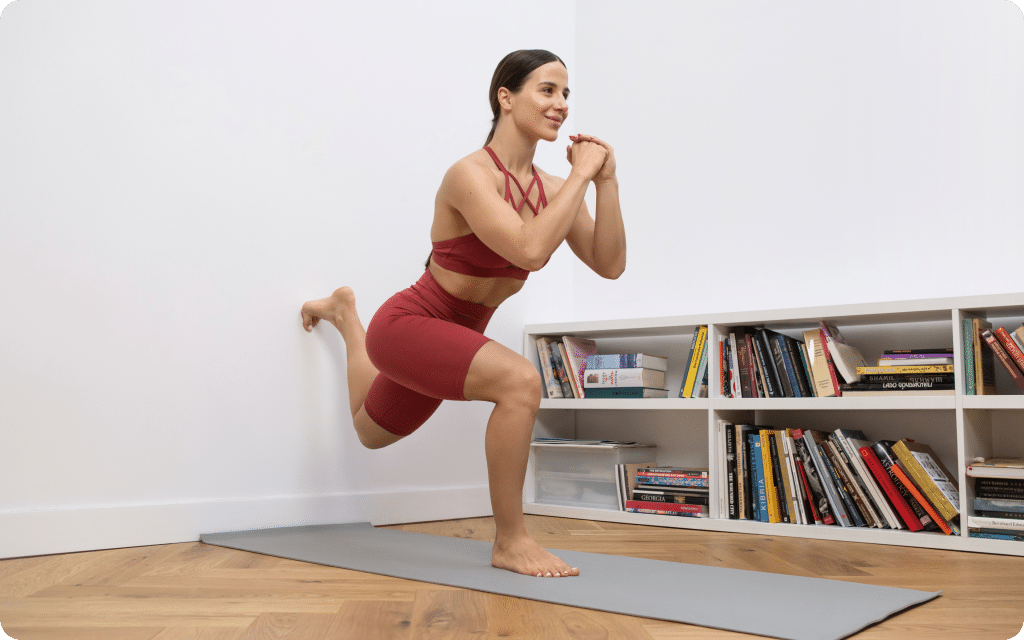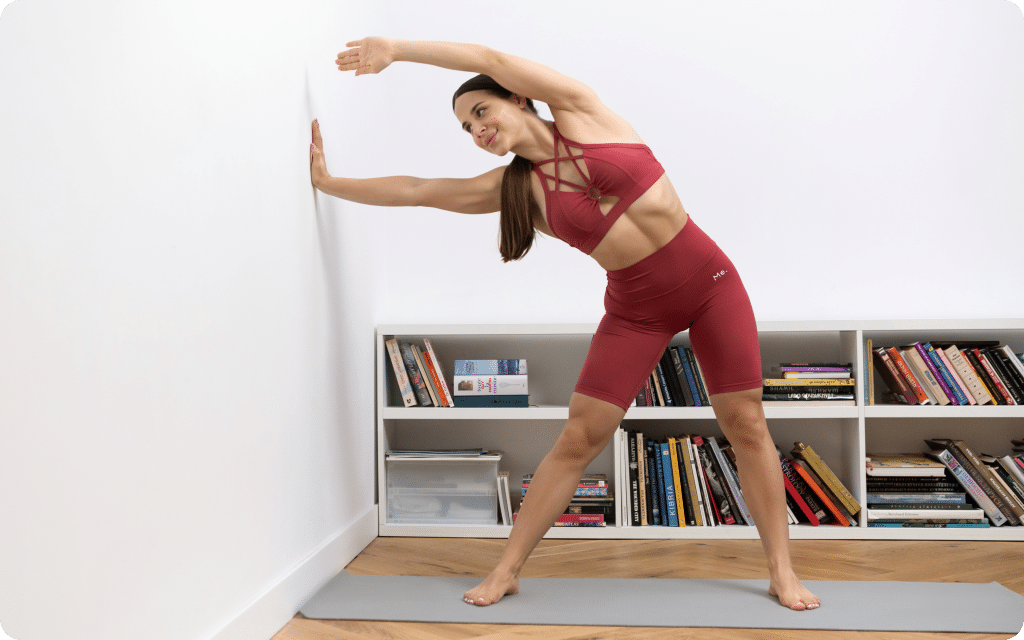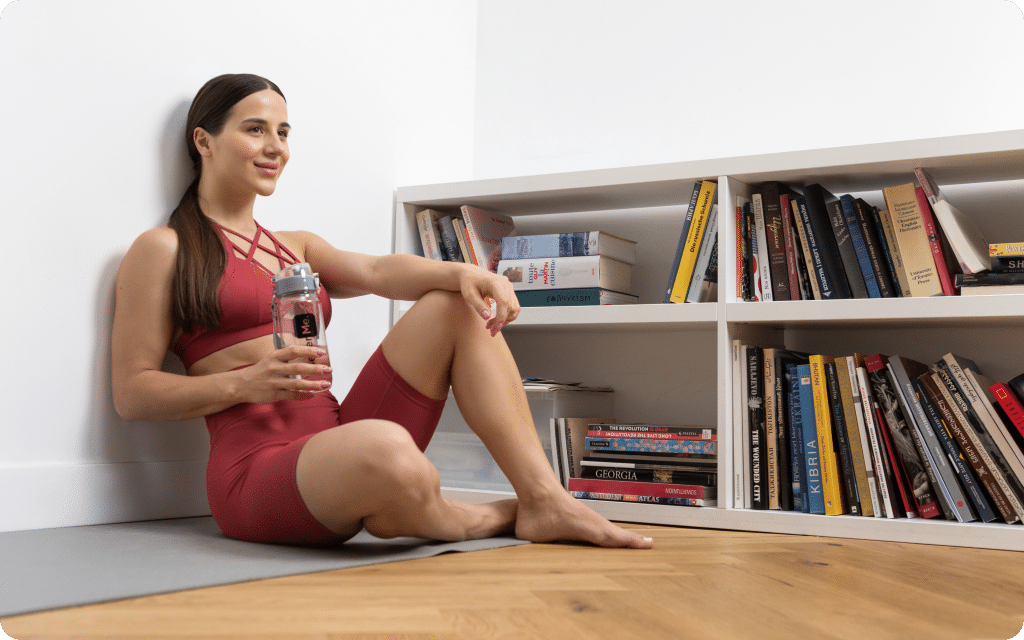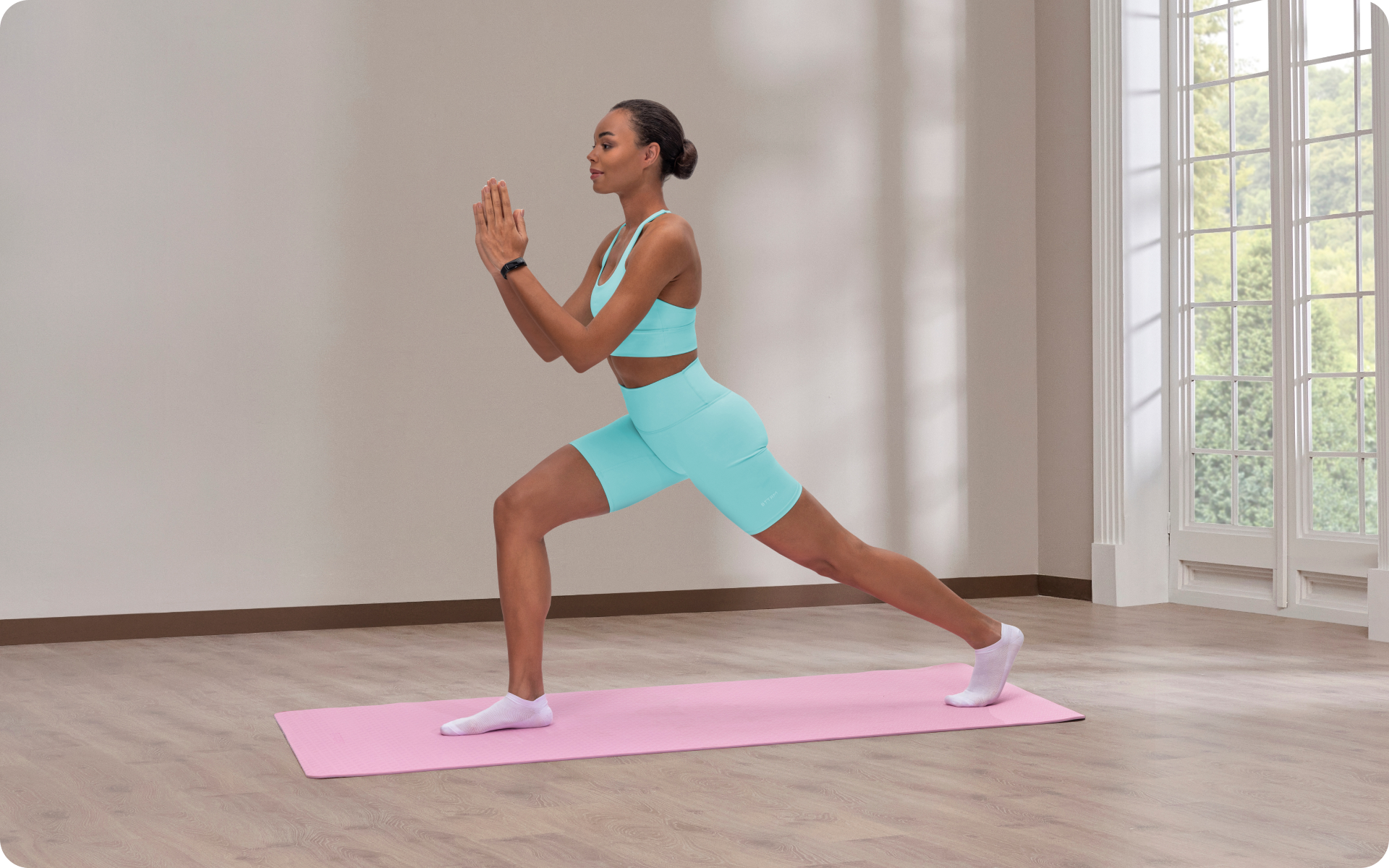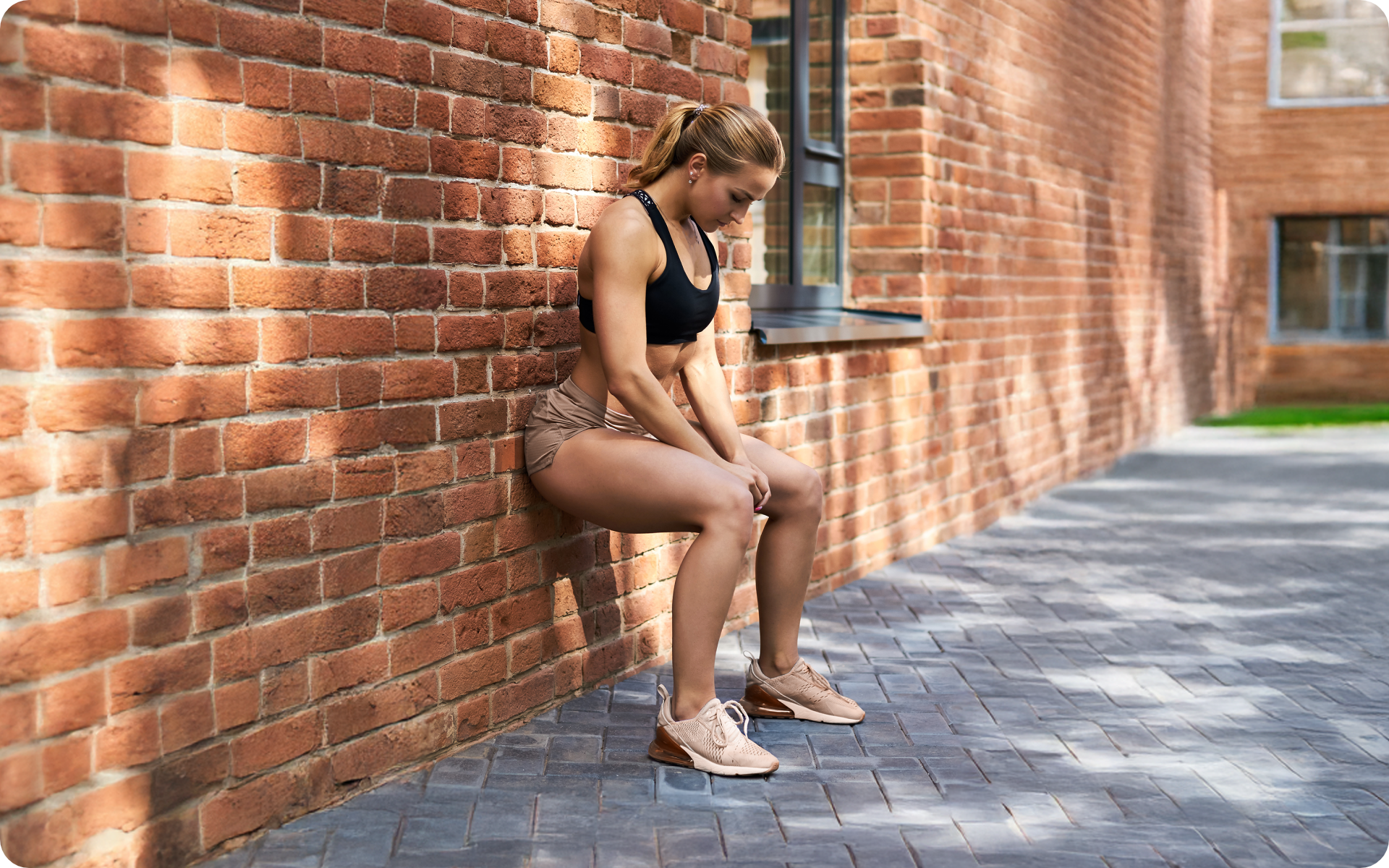Picture this: you’re in the middle of your Wall Pilates session, stretching like a graceful flamingo, when suddenly you realize you’ve forgotten the next exercise. Panic ensues as you scramble to find your list of moves, and your once zen-like state is now as chaotic as a squirrel on caffeine. Luckily for you we have the perfect solution for a seamless workout. Say goodbye to workout interruptions and hello to a streamlined, efficient routine with a custom Wall Pilates exercise chart. With this ingenious creation, you’ll not only shave precious minutes off your workout time but also keep your motivation levels soaring higher than a trapeze artist. And the cherry on top? You’ll save a pretty penny by DIY-ing your way to Pilates perfection. Now let’s dive in and discover how crafting your custom chart is as easy as a beginner’s roll-up!
Does Wall Pilates Count As Exercise?
According to the American College of Sports Medicine (ACSM), exercise is defined as any planned, structured, and repetitive bodily movement performed to improve or maintain physical fitness. This includes activities that enhance cardiorespiratory endurance, muscular strength, flexibility, and body composition (2).
With this definition in mind, Wall Pilates absolutely counts as exercise. As a variation of traditional Pilates, it incorporates the use of the wall for support and resistance, providing an extra challenge to your workout.
Wall Pilates is designed to improve core strength, flexibility, balance, and posture, which are key components of physical fitness as outlined by the ACSM.
By engaging multiple muscle groups and focusing on proper alignment, Wall Pilates can be an effective and enjoyable way to achieve your fitness goals. So, rest assured that incorporating Wall Pilates into your routine is a legitimate form of exercise backed by reputable exercise authorities.
Read More: How To Make The Most Out Of Wall Pilates 21-Day Challenge
Are Wall Pilates Good Exercise?
Yes, Wall Pilates is a good exercise, offering numerous benefits for your overall health and fitness (6) (8). Here are some reasons why Wall Pilates is an effective workout choice:
1. Improved Core Strength
Wall Pilates exercises engage the deep abdominal muscles and works on stabilizing the core, which helps improve balance, posture, and overall body strength (3).
2. Enhanced Flexibility
Wall Pilates emphasizes stretching and lengthening of the muscles, which can lead to increased flexibility and a greater range of motion in the joints.
3. Better Posture And Alignment
The wall provides support and guidance to maintain proper alignment during the exercises, which can help correct postural imbalances and reduce the risk of injury.
4. Increased Muscle Tone
By targeting specific muscle groups with controlled movements, Wall Pilates helps build lean muscle mass and tone the entire body.
5. Low Impact
Wall Pilates exercises are gentle on the joints, making them suitable for individuals with joint pain, arthritis, or those recovering from injuries.
6. Mind-Body Connection
Wall Pilates just like conventional pilates requires focus, concentration, and breath control, fostering a stronger connection between the mind and body, and promoting relaxation and stress relief (7).
7. Adaptable To Different Fitness Levels
Wall Pilates exercises can be easily modified to accommodate various fitness levels, making it accessible to beginners as well as advanced practitioners.
8. Improved Balance And Coordination
The stabilization and balance required for Wall Pilates exercises can help enhance overall coordination and proprioception.
Read More: 18 Best Wall Pilates Core Exercises To Add To Your Daily Ab Workout
How To Create An Exercise Chart For Wall Pilates
Creating your own Wall Pilates exercise chart can help you stay organized and motivated during your workouts. Follow these steps to design a personalized chart that suits your needs and goals:
Identify Your Objectives
Determine your primary fitness goals, such as improving core strength, flexibility, balance, or posture. This will help you choose the most relevant exercises for your chart.
Select The Exercises
Choose Wall Pilates exercises that align with your objectives and fitness level. You can pick from the basic Mat Pilates adaptations and the additional wall exercises discussed earlier.
Aim for a well-rounded selection that targets different muscle groups and includes a mix of strength, flexibility, and stability exercises.
Organize The Sequence
Arrange the chosen exercises in a logical order. Start with a warm-up, such as Wall Roll Downs, to prepare your body for the workout.
Follow with exercises that transition smoothly from one to another, alternating between muscle groups to avoid fatigue. Finish with a cool-down, like Wall Hamstring Stretch, to aid recovery.
Create Your Chart
Use a digital tool or draw your chart on paper. List the exercises in your chosen sequence, along with brief descriptions or images to illustrate the correct form. Include the number of repetitions or duration for each exercise, and consider adding space for notes or modifications.
Display Your Chart
Place your Wall Pilates exercise chart near your workout area for easy reference during your sessions.Make sure it’s visible and at a comfortable height for you to read while performing the exercises.
Track Your Progress
Record your workouts, including any improvements, challenges, or modifications. This will help you monitor your progress and make adjustments to your chart as needed.
Update Your Chart
As you become more comfortable with the exercises and experience progress, consider updating your chart with new exercises or variations to keep your routine fresh and challenging.
Remember to consult with a certified Pilates instructor or healthcare professional if you have any concerns or need guidance in creating your personalized Wall Pilates exercise chart. Happy exercising!
How Many Pilates Exercises Are There?
Joseph Pilates is credited for inventing more than 500 exercises, many of which can be modified for Wall Pilates (1). The number of possible exercises is limited only by the imagination; you can easily create a unique and personalized workout to suit your exact needs and goals.
When it comes to crafting your own custom Wall Pilates exercise chart, consider the basic 34 Mat Pilates exercises as a starting point. These exercises provide a great foundation for your routine and some can be modified to fit a wall Pilates workout.
BetterMe app will provide you with a host of fat-frying fitness routines that’ll scare the extra pounds away and turn your body into a masterpiece! Get your life moving in the right direction with BetterMe!
Below, we list the 34 basic Mat Pilates exercises and explain how they can be adapted for a Wall Pilates routine:
Hundred Pilates Exercise
Targets core, particularly the abdominal muscles
- Lie on your back, legs in tabletop position, arms extended by your sides, lift head and shoulders off the mat, and pump arms up and down while breathing
Wall modification:
- Stand with your back against the wall, feet hip-width apart
- Lift your arms to shoulder height, parallel to the floor
- Pump arms up and down while maintaining core engagement
Roll Up Pilates Exercise
Targets abdominals and spinal mobility
- Lie on your back, arms overhead, and sequentially roll up to a seated position, reaching for your toes
Wall modification: Not applicable
Roll Over Pilates Exercise
Targets lower abdominals and spinal mobility
- Lie on your back, legs straight and together, lift legs overhead, and roll over, trying to touch toes to the floor behind your head
Wall modification: Not applicable
One Leg Circles Pilates Exercise
Targets hip mobility and core stability
- Lie on your back, one leg extended on the floor and the other toward the ceiling, circle the raised leg while keeping the pelvis stable
Wall modification:
- Stand facing the wall, one hand on the wall for support
- Lift the leg closest to the wall to hip height
- Perform small circles with your leg while keeping your pelvis stable
Rolling Back Pilates Exercise
Targets abdominals and spinal mobility
- Sit with knees bent, feet flat, and hands holding your ankles, roll back onto your shoulders and then roll back up
Wall modification: Not applicable
One Leg Stretch Pilates Exercise
Targets core and coordination
- Lie on your back, head and shoulders lifted, one knee pulled into the chest, and the other leg extended, switch legs
Wall modification:
- Stand with your back against the wall
- Pull one knee into your chest, then switch legs while maintaining core engagement
Double Leg Stretch Pilates Exercise
Targets core and coordination
- Lie on your back, head and shoulders lifted, both knees pulled into the chest, extend arms overhead and legs forward, then return to starting position
Wall modification: Not applicable
Spine Stretch Pilates Exercise
Targets spinal mobility and hamstring flexibility
- Sit tall with legs extended and hip-width apart, reach forward to stretch the spine and hamstrings
Wall modification: Stand facing the wall, legs hip-width apart, and reach forward while maintaining a straight spine
Read More: Get Into Shape With This Effective 30-Minute Wall Pilates Workout Plan For Beginners
Rocker With Open Legs Pilates Exercise
Targets core strength and balance
- Sit with legs open, hands holding ankles, rock back onto shoulders and then roll back up
Wall modification: Not applicable
Cork-Screw Pilates Exercise
Targets obliques and spinal mobility
- Lie on your back, legs straight and together, lift legs toward the ceiling and circle them while keeping the pelvis stable
Wall modification: Not applicable
Saw Pilates Exercise
Targets spinal rotation and hamstring flexibility
- Sit tall with legs extended and wider than hip-width, twist torso and reach one hand toward the opposite foot
Wall modification:
- Stand facing the wall, legs wider than hip-width, arms out to the sides at shoulder height
- Twist your torso and reach one hand toward the opposite foot, then switch sides
Swan Dive Pilates Exercise
Targets back extensors and shoulder mobility
- Lie face down, hands under shoulders, extend arms, and lift the upper body while keeping the legs on the mat
Wall modification: Stand facing the wall, place hands on the wall, and extend arms while engaging the back muscles
One Leg Kick Pilates Exercise
Targets quadriceps and hip extensors
- Lie face down, hands under forehead, bend one knee and kick the foot toward the glute, switch legs
Wall modification: Stand facing the wall, place hands on the wall for support, and perform the same kick movement
Double Leg Kick Pilates Exercise
Targets back extensors and hamstring flexibility
- Lie face down, hands clasped behind the back, bend both knees and kick feet toward glutes, then extend legs and lift the upper body
Wall modification: Stand facing the wall, place hands on the wall for support, and perform the double leg kick movement
Neck Pull Pilates Exercise
Targets abdominals and spinal mobility
- Lie on your back, hands interlaced behind the head, roll up to a seated position, then roll back down
Wall modification: Not applicable
Scissors Pilates Exercise
Targets core strength and hamstring flexibility
- Lie on your back, both legs extended toward the ceiling, hold one ankle while lowering the other leg, switch legs
Wall modification: Stand facing the wall, one hand on the wall for support, and perform the leg movement
Bicycle Pilates Exercise
Targets core strength and hip mobility
- Lie on your back, hands behind the head, bring one knee into the chest while extending the other leg, switch legs while performing a cycling motion
Wall modification: Stand facing the wall, one hand on the wall for support, Bring one knee into the chest while extending the other leg, then switch legs while performing a cycling motion
Shoulder Bridge Pilates Exercise
Targets glutes, hamstrings, and spinal mobility
- Lie on your back, knees bent, feet flat, lift hips off the mat into a bridge position, lower hips and repeat
Wall modification: Not applicable
Spine Twist Pilates Exercise
Targets spinal rotation and obliques
- Sit tall with legs extended, arms out to the sides, twist torso to one side and then the other
Wall modification:
- Stand facing the wall, legs hip-width apart, arms out to the sides at shoulder height
- Twist your torso to one side and then the other
- For extra resistance, place your hands on the wall.
Betterme will keep you laser-focused on your weight loss journey! Nutrient-packed meal plans, fat-blasting workouts, galvanizing challenges and much more. Try using the app and see for yourself!
Jack Knife Pilates Exercise
Targets core strength and spinal mobility
- Lie on your back, legs straight and together, lift legs toward the ceiling, then lift hips off the mat, lower hips and legs with control
Wall modification: Not applicable
Side Kick Pilates Exercise
Targets hip abductors and adductors
- Lie on one side, legs straight, lift top leg and perform a small kick forward and backward
Wall modification:
- Stand facing the wall, one hand on the wall for support
- Lift the leg closest to the wall to hip height and perform a small kick forward and backward
Teaser Pilates Exercise
Targets core strength and balance
- Lie on your back, legs in tabletop position, roll up to a seated V position, balancing on your sit bones, then roll back down
Wall modification: Not applicable
Hip Twist Pilates Exercise
Targets obliques and hip mobility
- Sit tall with legs extended and together, hands resting on the mat behind you, circle legs while maintaining upper body stability
Wall modification: Not applicable
Swimming Pilates Exercise
Targets back extensors and coordination
- Lie face down, arms and legs extended, lift opposite arm and leg, then switch sides while maintaining core engagement
Wall modification:
- Stand facing the wall, one hand on the wall for support
- Lift opposite arm and leg, then switch sides while maintaining core engagement
Leg Pull Front Pilates Exercise
Targets core strength and shoulder stability
- Start in a plank position, lift one leg off the mat, then switch legs
Wall modification: Perform a plank with feet against the wall, then lift one leg at a time
Leg Pull Pilates Exercise
Targets glutes and hamstrings
- Start in a reverse plank position, lift one leg off the mat, then switch legs
Wall modification: Not applicable
Side Kick Kneeling Pilates Exercise
Targets hip abductors and adductors and core stability
- Kneel on one knee, other leg extended to the side, perform a small kick up and down
Wall modification:
- Stand facing the wall, one hand on the wall for support
- Lift the leg closest to the wall to hip height and perform a small kick up and down
Side Bend Pilates Exercise
Targets obliques and shoulder stability
- Start in a side plank position, lower hips toward the mat, then lift hips back up
Wall modification: Not applicable
Boomerang Pilates Exercise
Targets core strength and coordination
- Start seated with legs crossed, roll back onto shoulders, then roll back up and switch leg positions
Wall modification: Not applicable
Seal Pilates Exercise
Targets abdominals and spinal mobility
- Sit with knees bent, hands holding ankles, rock back onto shoulders, then roll back up
Wall modification: Not applicable
Crab Pilates Exercise
Targets core strength and balance
- Start seated with knees bent, feet flat, hands behind you, lift hips off the mat and walk hands and feet forward and backward
Wall modification: Not applicable
Rocking Pilates Exercise
Targets back extensors and hip mobility
- Lie face down, bend knees and hold ankles, lift chest and thighs off the mat, rock back and forth
Wall modification: Not applicable
Control Balance Pilates Exercise
Targets core strength and balance
- Lie on your back, legs extended toward the ceiling, lift hips off the mat and reach one hand to touch the opposite foot, switch sides
Wall modification: Not applicable
Push Up Pilates Exercise
Targets chest, triceps, and core strength
- Start in a plank position, perform a push up, then roll onto your back and reach arms overhead
Wall modification: Perform a plank with feet against the wall, then perform the push up and roll onto your back to reach arms overhead.
Additional Wall Pilates Exercises That Go Beyond The Basics
Beyond the basic Wall Pilates adaptations, there are several other exercises that utilize the wall for support, resistance, and alignment. Here are some additional Wall Pilates movements to incorporate into your routine:
Wall Squats
- Stand with your back against the wall and feet hip-width apart
- Slide down the wall until your knees are bent at a 90-degree angle, keeping the knees aligned over the ankles
- Hold for a few breaths, then slide back up
Wall Roll Downs
- Stand with your back against the wall, feet hip-width apart
- Tuck your chin and slowly roll your spine down the wall, one vertebra at a time, until your upper body is hanging forward
- Roll back up, returning to the starting position
Wall Angels
- Stand with your back against the wall, feet hip-width apart
- Place your arms against the wall in a “W” shape, with elbows bent and palms facing forward
- Slide your arms up the wall, straightening them into a “V” shape, then return to the starting position
Wall Leg Press
- Stand facing the wall, hands on the wall for support
- Lift one leg and place the foot on the wall, knee bent at a 90-degree angle
- Press the foot into the wall while engaging the glutes and hamstrings, then release and switch legs
Wall Plank
- Stand facing the wall, place your hands on the wall at shoulder height
- Step your feet back until your body forms a straight line from head to heels, like a plank position
- Hold for a few breaths, maintaining core engagement
Wall Side Plank
- Stand sideways near the wall, with one hand on the wall at shoulder height
- Step the feet away from the wall, creating a straight line from head to heels
- Hold for a few breaths, engaging the obliques, then switch sides
Wall Hamstring Stretch
- Stand facing the wall, place one foot on the wall with the leg straight and heel resting against the wall
- Keep the other leg straight on the ground, toes pointing forward
- Gently lean forward to stretch the hamstring, then switch legs
These additional Wall Pilates exercises provide an opportunity to explore more challenging movements while continuing to utilize the wall for support and resistance.
Remember to always listen to your body and consult with a certified Pilates instructor if you have any concerns or need guidance.
How Long Should My Pilates Workout Be?
The ideal length of a Pilates workout can vary depending on your fitness level, goals, and available time. However, a general guideline for a Pilates session is between 45 minutes to an hour. Here’s a breakdown of what to consider when determining the length of your workout:
1. Beginners
If you’re new to Pilates, starting with shorter sessions of 20-30 minutes is recommended. This allows you to gradually build up your strength, flexibility, and familiarity with the exercises. As you become more comfortable, you can increase the duration of your workouts.
2. Intermediate And Advanced Practitioners
For those with more experience in Pilates, a 45-minute to an hour-long session is typically sufficient to provide a comprehensive and effective workout. This duration allows you to focus on proper form and technique while targeting various muscle groups.
3. Goals
Consider your personal fitness goals when deciding the length of your Pilates workout.
If you’re aiming for overall conditioning and maintenance, 45 minutes to an hour should suffice. However, if you have specific goals like rehabilitation or athletic performance enhancement, you may need longer or more frequent sessions.
4. Time Constraints
If you’re pressed for time or want to incorporate Pilates into a busy schedule, shorter sessions of 20-30 minutes can still be beneficial. Prioritize quality over quantity, focusing on proper form and technique during these shorter workouts.
A warm up and cool down are important components of any exercise program, including Pilates. Adding 10 minutes of warm-up and cool-down activities to your workout will enhance your results, as well as help reduce the risk of injury (4) (5).
Remember, consistency is key when it comes to any exercise routine. Aim for at least two to three Pilates sessions per week, adjusting the duration and intensity as needed to align with your goals and fitness level.
And always consult with a certified Pilates instructor or healthcare professional if you have any concerns or need guidance on creating a personalized workout plan.
How Long Until Wall Pilates Shows Results?
The time it takes to see results from Wall Pilates can vary depending on factors such as your starting fitness level, consistency, workout frequency, and individual goals.
However, many people begin to notice improvements in their strength, flexibility, and posture within a few weeks of consistent practice.
Here’s a rough timeline of when you might expect to see results:
1. Initial Improvements (2-4 weeks)
With consistent practice, you may begin to feel increased muscle engagement and improved body awareness. You might also experience enhanced core strength, better posture, and an increase in overall flexibility.
2. Visible Changes (8-12 weeks)
As you continue your Wall Pilates routine, you may start to notice visible improvements in muscle tone and definition. Your posture may become more upright, and you could experience a reduction in minor aches and pains related to imbalances or misalignment.
3. Long-Term Benefits (3-6 months)
With continued dedication to your Wall Pilates practice, you can expect to see ongoing improvements in your strength, flexibility, balance, and overall physical conditioning.
Over time, these benefits can contribute to better functional movement, injury prevention, and enhanced athletic performance.
Remember that everyone’s body is different, and progress may not be linear.
To maximize your results, focus on practicing proper form and technique, maintain a consistent schedule with at least two to three sessions per week, and consider combining your Wall Pilates workouts with other forms of exercise and a healthy diet.
Be patient and enjoy the journey, as the benefits of Wall Pilates extend beyond just the physical transformations.
The Bottom Line
Wall Pilates is an effective and versatile form of exercise that can help you achieve various fitness goals, such as improving core strength, flexibility, balance, and posture.
By creating a personalized Wall Pilates exercise chart, you can stay organized, motivated, and on track with your fitness journey. Incorporate a well-rounded selection of exercises targeting different muscle groups to maximize the benefits.
DISCLAIMER:
This article is intended for general informational purposes only and does not serve to address individual circumstances. It is not a substitute for professional advice or help and should not be relied on for making any kind of decision-making. Any action taken as a direct or indirect result of the information in this article is entirely at your own risk and is your sole responsibility.
BetterMe, its content staff, and its medical advisors accept no responsibility for inaccuracies, errors, misstatements, inconsistencies, or omissions and specifically disclaim any liability, loss or risk, personal, professional or otherwise, which may be incurred as a consequence, directly or indirectly, of the use and/or application of any content.
You should always seek the advice of your physician or other qualified health provider with any questions you may have regarding a medical condition or your specific situation. Never disregard professional medical advice or delay seeking it because of BetterMe content. If you suspect or think you may have a medical emergency, call your doctor.
SOURCES:
- An Introduction to Clinical Pilates (2005, journals.humankinetics.com)
- Benefits and Risks Associated with Physical Activity (n.d., acsm.org)
- Core muscle activation during Pilates exercises on the Wunda chair (2021, sciencedirect.com)
- Do We Need a Cool-Down After Exercise? A Narrative Review of the Psychophysiological Effects and the Effects on Performance, Injuries and the Long-Term Adaptive Response (2018, link.springer.com)
- Effects of warming-up on physical performance: a systematic review with meta-analysis (2010, pubmed.ncbi.nlm.nih.gov)
- Pilates – health benefits (n.d., betterhealth.vic.gov.au)
- Pilates and Mindfulness: A Qualitative Study (2012, researchgate.net)
- Pilates: how does it work and who needs it? (2011, ncbi.nlm.nih.gov)
